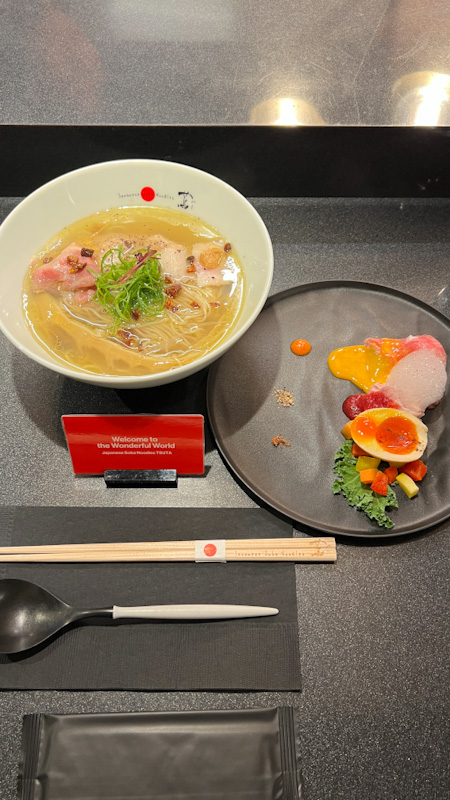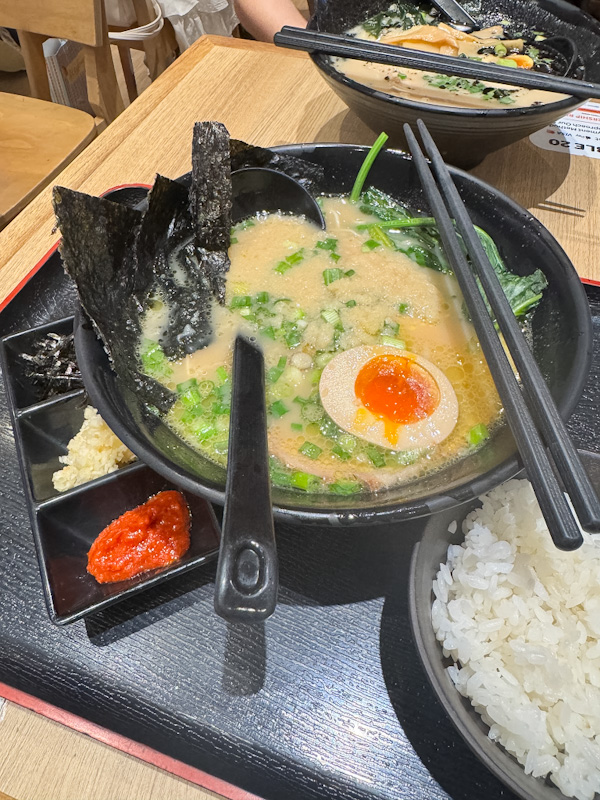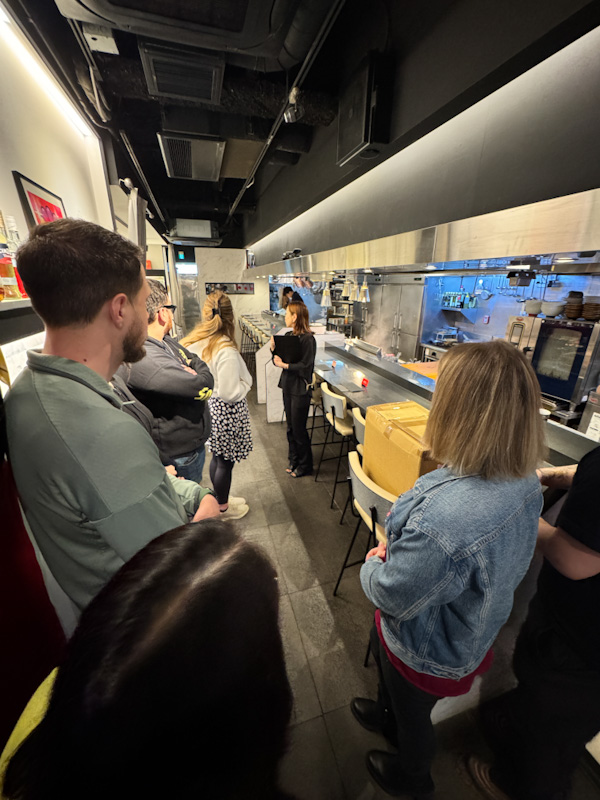
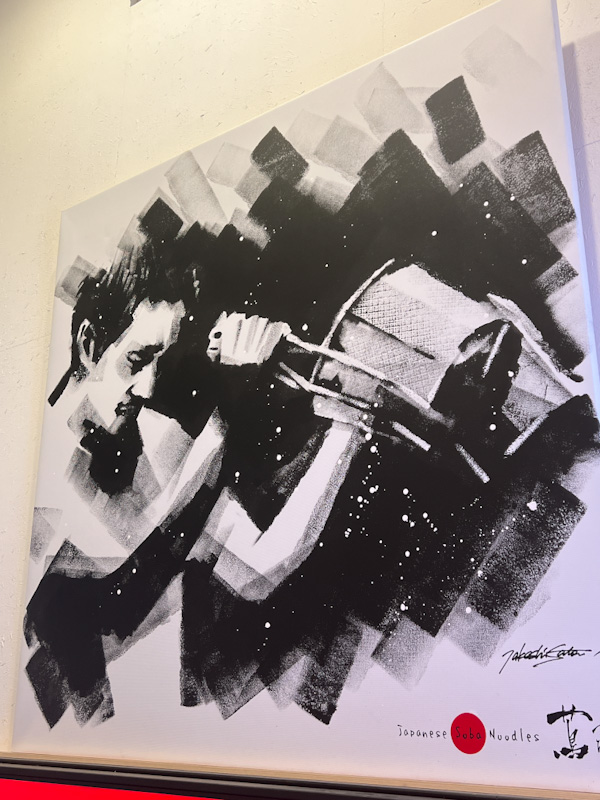
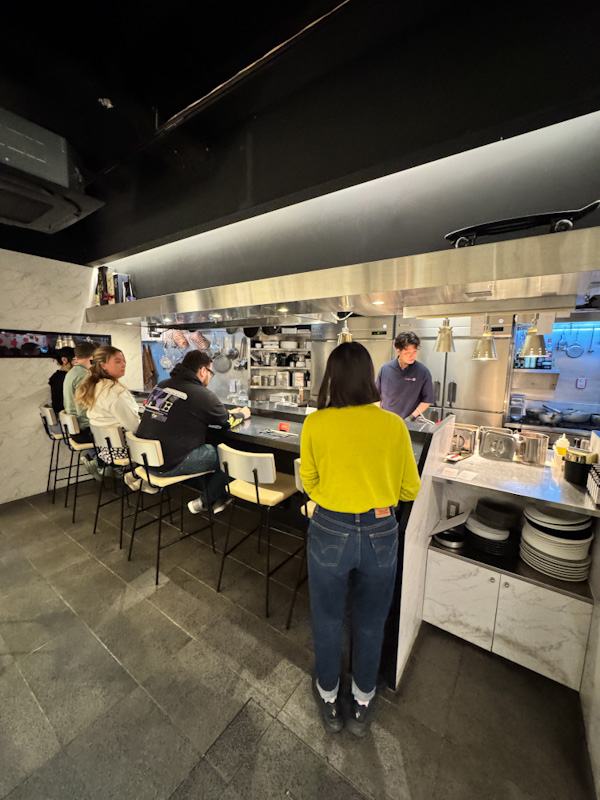
If you’re a ramen nerd like me, you’ve probably heard of Tsuta Ramen Tokyo—the world’s first Michelin-starred ramen restaurant. On my recent trip to Tokyo, I signed up for their exclusive ramen kitchen tour, and let me tell you, it was one slurp-worthy experience. From the way they layer umami to the noodle room that felt more like a lab, this tour gave me a whole new appreciation for the craft behind world-class Japanese ramen.
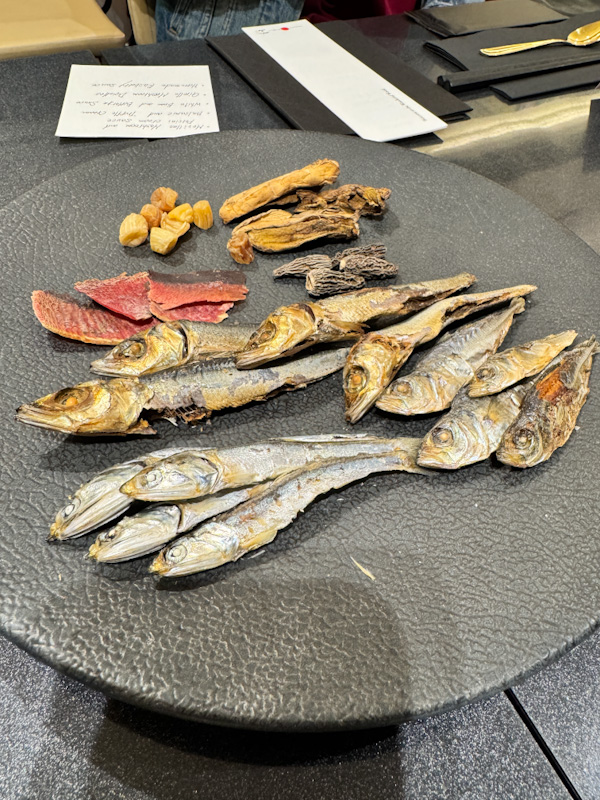

1. The Stock
First up, the foundation: the stock. Tsuta’s broth isn’t just chicken or pork bones tossed into a pot. It’s a symphony of high-quality ingredients—think dried mushrooms, different types of fish like horse mackerel, bonito, and shishamo, and of course, chicken.
What really blew my mind was how they explained the logic behind choosing what seemed like overlapping ingredients. You’d think three types of fish would make things too similar, right? But each one brought something different to the table. Some had a slightly pungent, fishier umami note; others added a gritty bitterness or a clean ocean salinity. It’s like playing with chords in music—each note contributes something that, on its own, might feel odd or overpowering. But together, they created a rich, complex harmony that was deeply savoury without being heavy. Edible art, truly—and a big part of what makes their Michelin ramen broth so iconic.
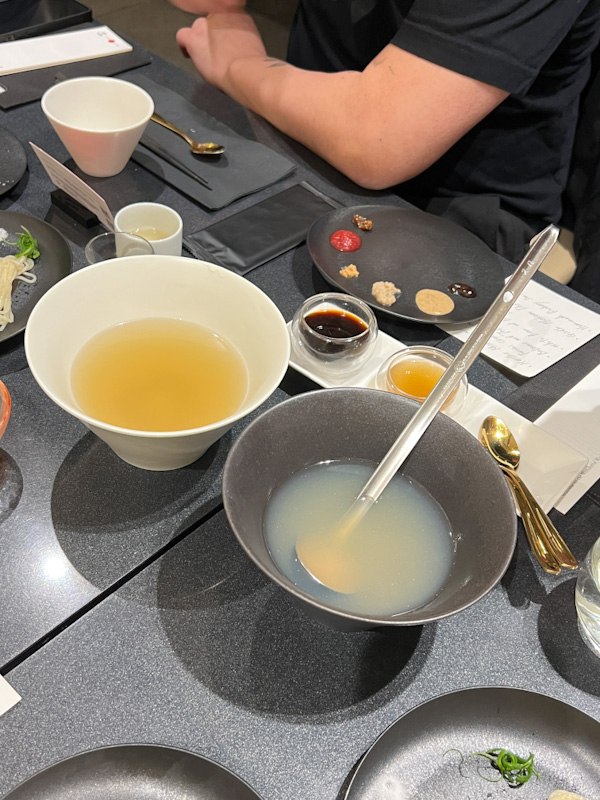
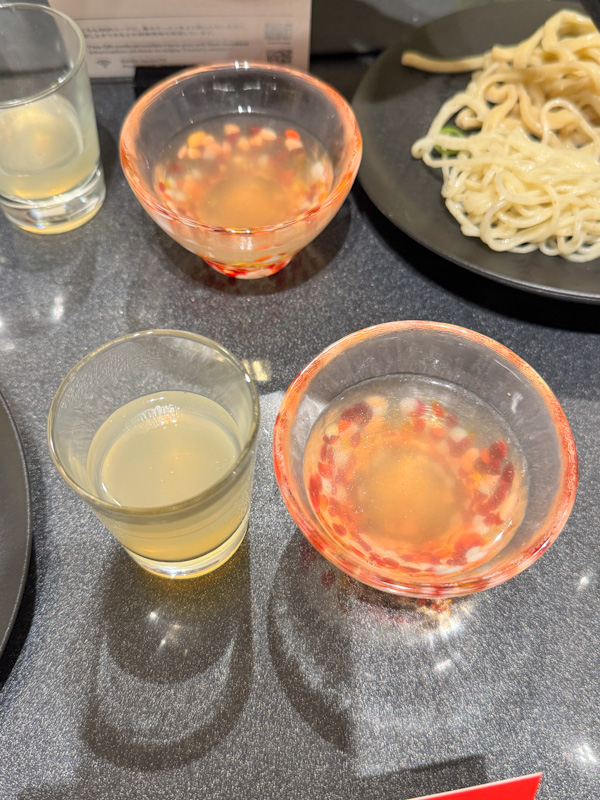
2. The Ramen Soup
Now, onto the soup—because stock is just the beginning. During our class, we experimented with a 50/50 blend of chicken and fish stock. On their own, each one tasted kind of flat. The chicken stock was mellow, almost like lightly seasoned “chicken-flavoured water.” The fish stock tasted like a subtle dashi.
But mix them together? Magic. Suddenly, flavours started to dance. The blend had a new depth, with the chicken adding warmth and roundness, while the fish brought in sweetness from the sea. We were encouraged to experiment with different ratios—more fish stock if you wanted brinier notes, more chicken if you preferred something more mellow and comforting. The tiniest adjustments made huge differences. It reminded me how versatile and delicate a proper Japanese ramen soup base really is.
Did You Know #1: The Water Rumour
One of the most talked-about secrets of Tsuta is their water. Rumour has it they use "special water"—some even said it’s from the Himalayas or a secret Japanese spring. While they didn’t reveal much, they did confirm the water is "special" and used for everything—from washing veggies to making stock. Supposedly, it even helps prevent fats from solidifying in our bodies. Believe what you will, but it definitely adds to the mystery of their premium ramen recipe.
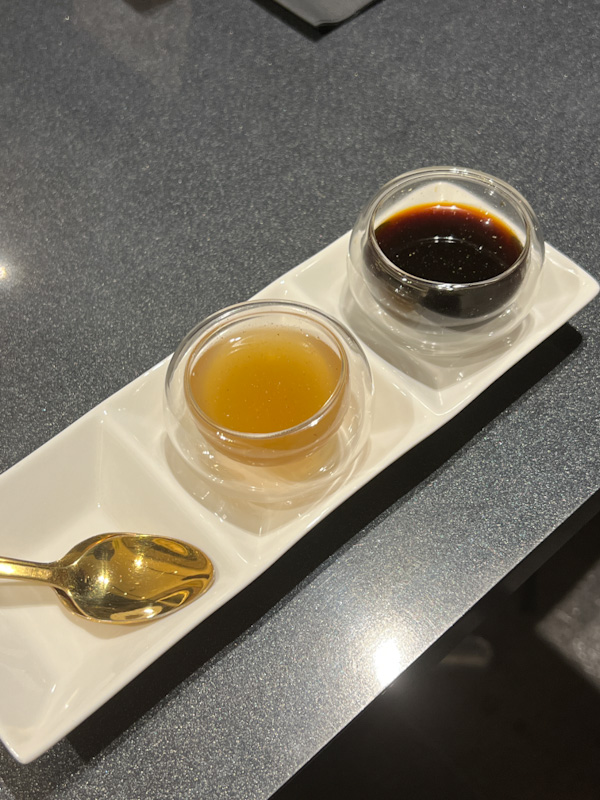
3. The Tare
Here’s where things really clicked for me. If the stock is the canvas, the tare is the paint. It’s the concentrated seasoning that turns the soup into a ramen-worthy broth.
As someone who has tried and failed to make ramen at home, I learned the hard way that tare is not optional. My rookie mistake? Trying to make an all-in-one soup like we do in Chinese cuisine—dump everything into a pot and let it stew. But ramen doesn’t work like that.
At Tsuta, they add a pre-made tare (either shoyu or shio) to the broth at a precise 1:10 ratio. And the transformation? Unreal. The soup went from relatively flat and mellow to layered, rich, and full of personality. That one addition brought everything to life. It’s what separates a casual bowl from gourmet ramen.
Did You Know #2: Ramen Without Tare?
Some ramen shops, like Ginza Hachigou, skip tare entirely. They let the ingredients speak for themselves. But at Tsuta, tare is non-negotiable—it’s what defines their flavour signature.
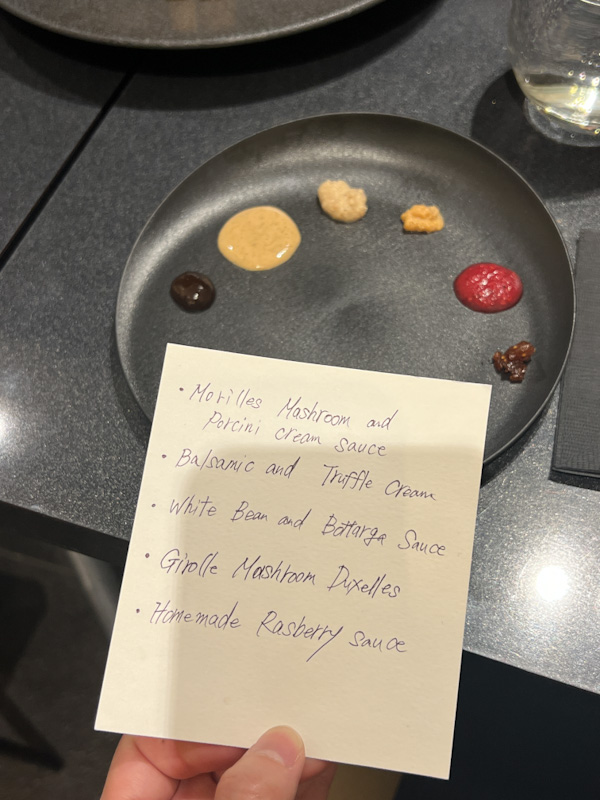
4. The Condiments
Just when I thought the flavour journey was over, we hit the condiments. At Tsuta, these aren’t just afterthoughts—they’re key players in the flavour orchestra.
- Some enhance: like a splash of balsamic vinegar that brightens the shoyu base and adds a sharp, tangy edge.
- Some balance: like a porcini mushroom sauce that mutes the fishier notes and brings out hidden sweetness.
- Some dominate: like a truffle paste, which can immediately turn the entire dish into a luxurious truffle ramen experience.
What I loved was how fluid everything was. A spoonful of sauce could elevate or completely shift the flavour profile. It’s like seasoning in real-time—a reminder that the best Tokyo ramen shops pay attention to every last detail.
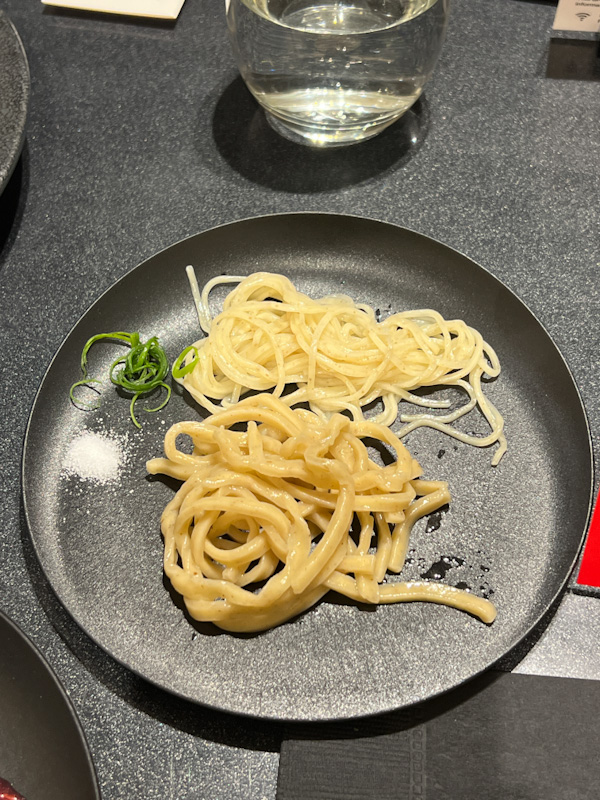

5. The Noodles
The noodle room was like stepping into a lab. A small, temperature- and humidity-controlled space that smelled intensely of wheat. Sitting in the middle was their noodle machine, carefully rolling and cutting dough.
We noticed the noodles weren’t a uniform colour—there were flecks of darker grains. That’s when the chef told us that Tsuta uses a unique mix of flours, including whole grain wheat, which not only adds flavour but gives that speckled appearance.
What surprised me most was how the same dough could produce noodles with completely different textures and even flavour profiles. The thinner noodles were soft, silky, and subtle—perfect for a lighter broth. The thicker ones were chewy, bold, and carried a nutty wheat flavour that held up even in a rich soup. It’s not just texture—noodle thickness literally changes the eating experience.
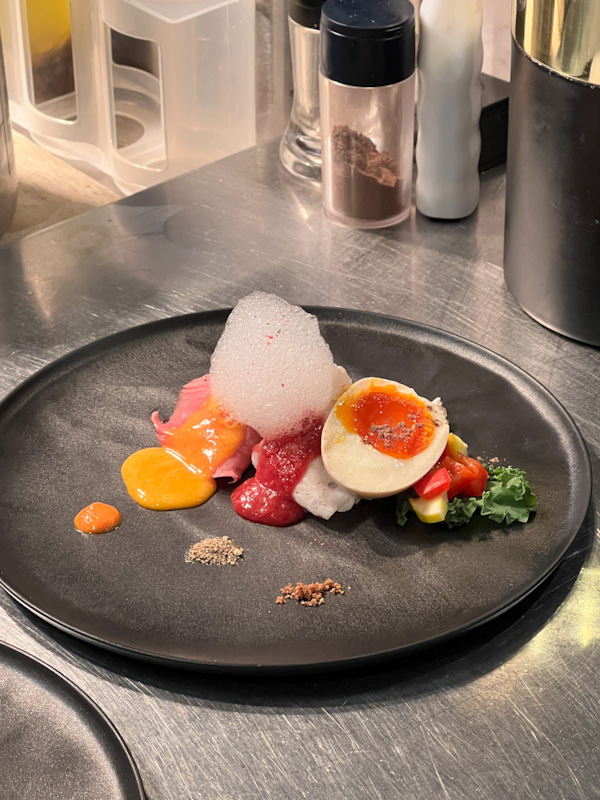

6. The Toppings and Plating
As we moved to the final stage—watching the chef plate the ramen—the anticipation was real. We didn’t get a deep dive into their topping secrets (probably a closely guarded part of the recipe), but watching the precision and care was inspiring.
Each bowl is assembled like a piece of art. Every slice of meat, every drip of oil, every garnish is placed with intent. The attention to detail is what elevates a good bowl into a Michelin-worthy one—and why Tsuta continues to stand out in the ultra-competitive Tokyo ramen scene.
Did You Know #3: Why the Lamps?
Ever noticed the hanging lamps at Tsuta? They’re not just for ambiance. They’re actually pull-down bowl warmers, designed to keep your ramen at the perfect temperature before it reaches your table. Because yes, even temperature plays a big role in how ramen tastes.

